In this article, we will learn about a farmer who has successfully grown papaya in an organic way on his farm and is earning huge profits from it. Below we will see the success story of Mr. Manohar, his experiences in growing organic papayas, cultivation details of organic papayas, and the investment and profits involved in papaya farming, according to Mr. Manohar.
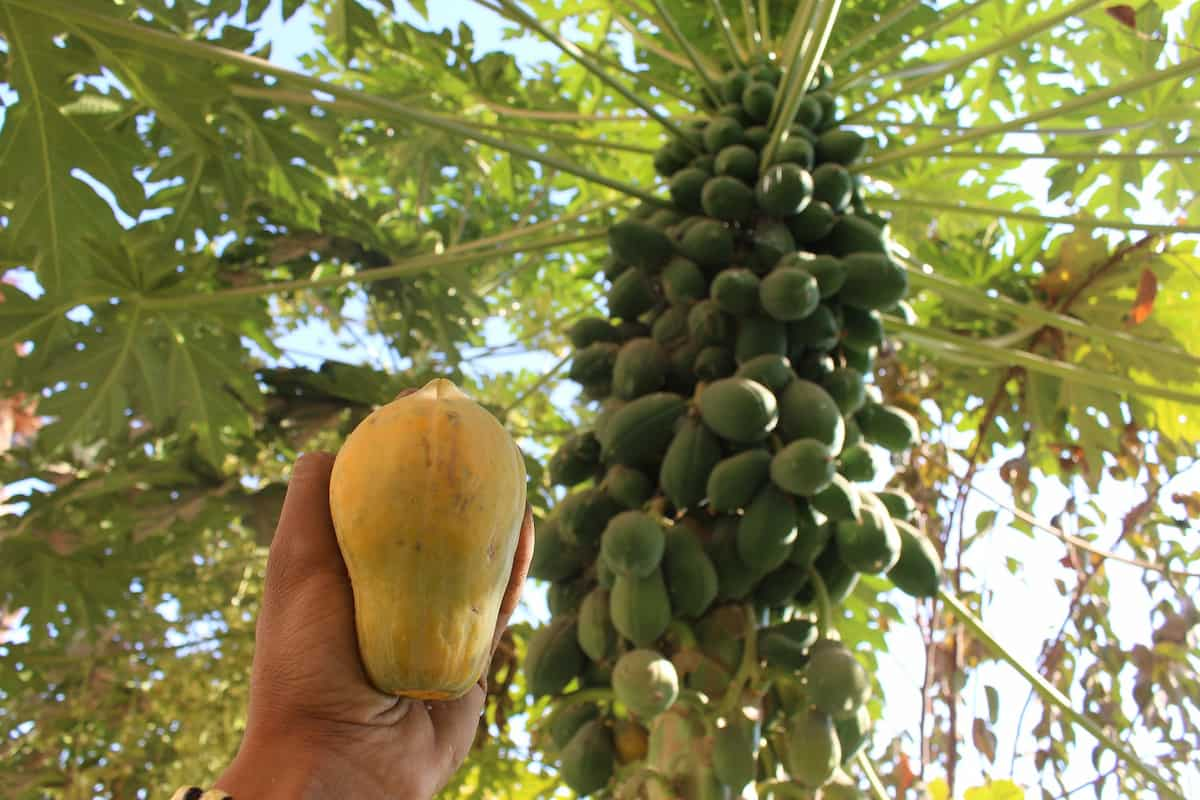
How this farmer earns 20 lakhs from 3 acres organic payaya farm
Is papaya farming profitable in India?
The papaya tree is one of the most reliable plants to cultivate. It also has low water and upkeep needs. The returns are substantial and simple to cultivate, given the right conditions. Profits from growing papaya on an acre of land may reach up to 3 Lakhs per year for certain growers. Gains of up to 5 Lakhs per acre are possible. Papaya producers face the same challenges other farmers face when selling their fruit. Some papaya growers going bankrupt is fairly unusual. Maximizing profits from a papaya plantation requires careful timing, picking the ideal season, and keeping costs down.
Papaya producers shouldn’t try to compete with other fruit growers. There are likely to be many mangoes available at the market if you want to harvest your papaya plants between March and May. Because of the higher compensation, most workers would be focused on harvesting mangoes. Finding workers will be difficult. Also, since there is no papaya market at this time of year, the price will be much reduced. Mangoes will be bought by the masses, while only a select few will shell out for papayas.
How many months will papaya bear fruit?
Cared-for plants may bloom as early as four months after planting and bear fruit between 7 and 11 months afterward. Papaya plants yield varying amounts of fruit depending on where they are grown, the time of year, and how well they are cared for. Over a year, yields might range from 60 to 80 pounds per tree. Papaya trees may flourish and produce fruit in a wide range of soil textures and kinds as long as they drain adequately. Soils ranging in pH from 4.5 to 8.0 are ideal for growing plants in sands, loams, and rocky conditions.
In case you missed it: How this Farmer is Earning 24 Lakh from Custard Apple Cultivation: 4 Acres Farming Sucess Story
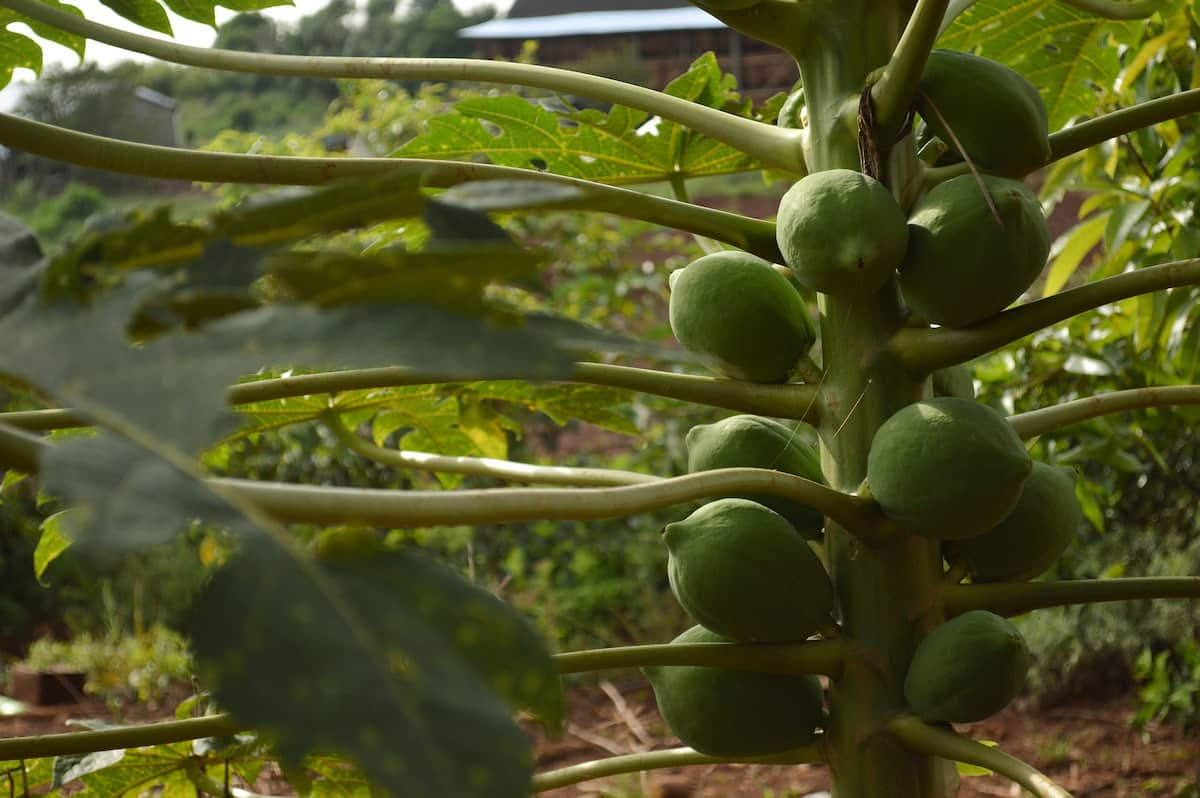
How do space and prune papaya plants?
Papaya trees thrive in sunny locations, far from other vegetation, structures, and overhead electricity lines. Generally speaking, planting 2–3 papaya plants 7–12 ft (2.1–3.7 m) apart from one other increases the likelihood that at least one of the trees will bear fruit and makes fertilizing and watering much easier. Plants of the papaya family are not trimmed since their primary growth point is terminal, and trees that have been branched may not produce as much fruit.
Side shoots may develop from mature papaya plants if they are subjected to growth-inhibiting circumstances or if the plant’s primary growing point is damaged or dies. Choosing just the healthiest one or two shoots and cutting off the others will encourage the remaining ones to flourish and bear fruit. If you tie these side shoots to a stake, they won’t be able to break off from the weight of the fruit or the wind as easily. The scarring of the fruit from the leaf petiole base may be reduced by removing dead leaves. There will be less need to deal with pest control and diseases.
What are the suitable conditions for papaya farming?
Papaya grows well in warm climates. It does well in both tropical and subtropical climates. Cold temperatures easily damage it. 25–30 degrees Celsius is ideal, with 16 degrees being the absolute lowest. The optimal pH range is from 6 to 6.5. Where winters are moderate, as, in the foothills, papayas thrive. Cultivation is difficult because of low temperatures and frost at higher elevations.
Fruits grow slowly and have inferior quality in the winter because of the chilly nights. Well-drained or sandy loam soil with sufficient organic matter is ideal. Soils that are very calcareous or sticky are not ideal because rainfall may pool there. This might be disastrous for plant life. You’ll need to install a drainage ditch and a raised bed to solve this problem.
In addition, papaya plants need consistently wet soil, so be sure to maintain it in the field. It’s also ideal if the weather is dry throughout the ripening period. Further, poor development may arise from repeatedly planting on the same land. Therefore, uneven terrain is favored over smooth, flat ground. The soil on these hills is ideal since it is rich in organic matter and has good drainage.
In case you missed it: How this Farmer Earning 30 Lakhs from Papaya Cultivation in 6 Acres: An Indian Farmer Success Story
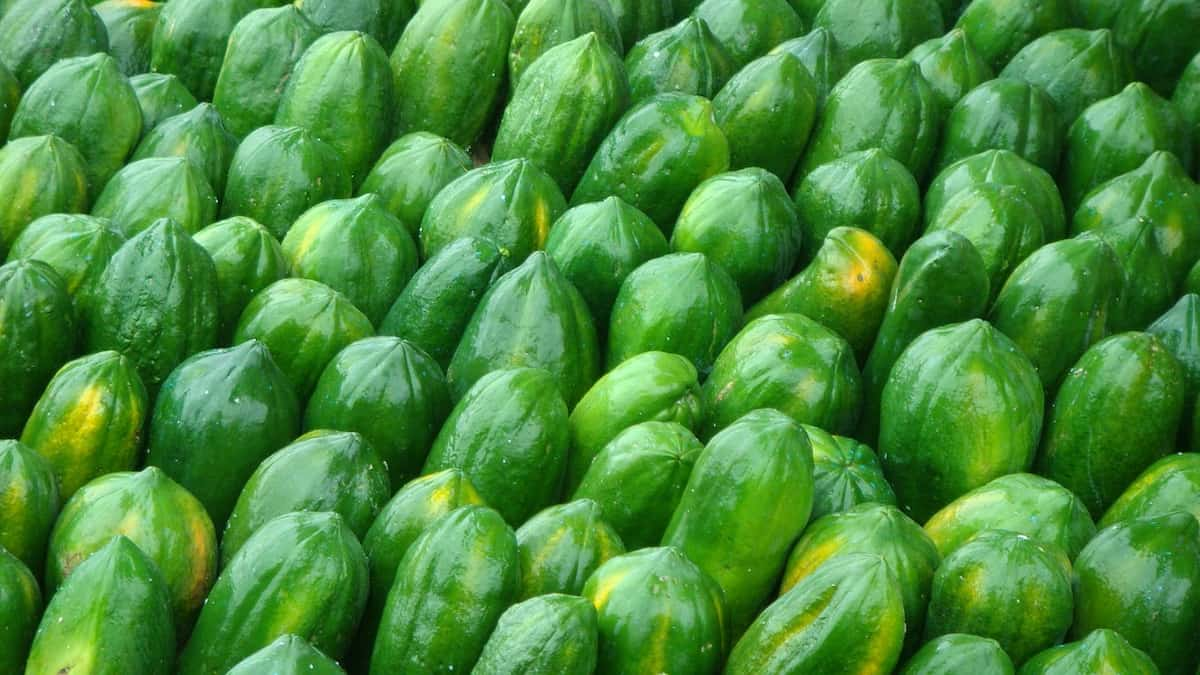
How to start a papaya farm?
Papaya must be grown from seed. It all starts with snagging some seeds. Generally speaking, female plants that are pest- and disease-free will produce the most mature, huge, and healthy fruits, which you can then harvest. Seeds are uncommon to rot in storage since their viability declines to zero after 45 days. The ideal range for radical emergence and optimal performance is between 21 and 27 degrees Celsius. From planting until sprouting, a crop cycle of 1–4 weeks is possible, depending on the weather.
Treat the seed with Thiram (TMTD) W.P. for early-stage fungal disease management before planting. To cultivate seedlings, you may use either a soft black plastic pot or a clear plastic bag that is 8 to 9 cm broad, 8 cm wide, and 8 cm high. Every one of those bags needs a hole in it so water can escape. The plastic seedling tray may also be used. This is a brand-new approach to seedling cultivation that has been shown to produce high-quality seedlings.
With a razor blade, the bag is slashed open when the seedlings are between 15 and 20 cm tall. These seedlings may finally be moved into their new underground homes in the evenings. That means each hole can accommodate three seedlings spaced 15 centimeters apart. After a transplant, watering is crucial to preventing transplant shock and promoting a speedy recovery. Once mature, the plant’s fruiting is continual. Therefore, it requires constant fertilizing. Starting with a conception plan is essential.
This is because papaya plants need five months to establish a stable food supply, from transplanting to first blooming. It’s important to cease fertilizing the soil six months before harvest. Every ten days during the winter and once per week during the summer is the typical irrigation frequency. Still, it changes depending on climate, soil type, and watering practices. A few different types of irrigation may be used, including the ring, furrow, and drip systems. However, you should keep the water away from the stem. If the plants are well watered, they can survive the cold without suffering harm.
In case you missed it: How this Farmer Made 42 Lakhs from 5 Acres of Organic Pomegranate Farming: Fruit Cultivation Sucess Story in India
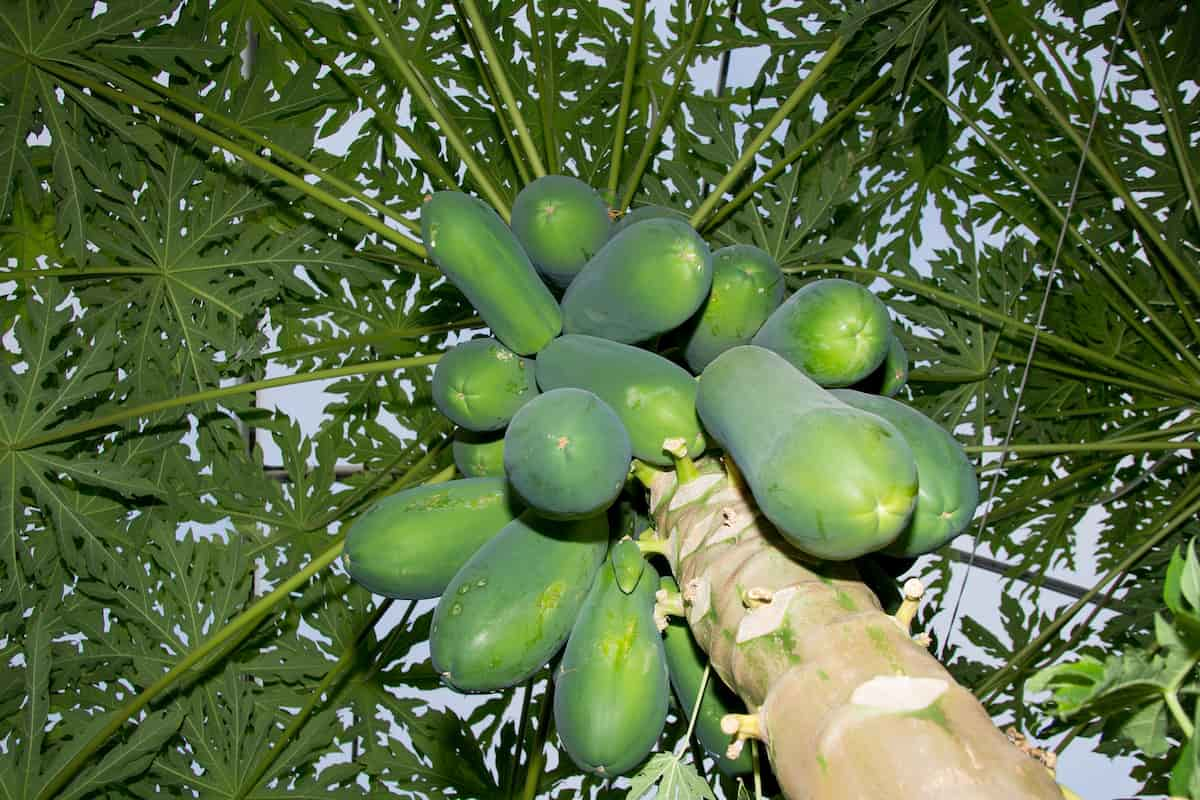
The success story of Mr. Manohar
Mr. Manohar belongs to Ranga Reddy district, Telangana. In the past, he used to grow sugarcane and ginger, but due to the pandemic effect, there was a significant fluctuation in market prices, leading to a huge loss for Mr. Manohar. However, he wanted to come back strong and choose such a crop for cultivation from which he could recover all his losses. He started his investigation and learned about various crops. From all of those crops, papaya cultivation has caught his interest. He then started learning more about papaya farming, and when he saw the constant price graph over a few years, he decided to start papaya farming.
He even was amazed to see the yield potential of papaya crops. When he learned that the demand for organic papayas was even higher, he was happier as he had been organically cultivating crops for 11 years, which was his cup of tea. He then immediately started his papaya venture. Mr. Manohar is a successful farmer earning huge profits from his papaya farm. Below we will see the details of Mr. Manohar’s papaya farm, organic cultivation details of papaya crops, and the profits and investments involved in organic papaya farming, according to Manohar.
Organic papaya cultivation details, according to Mr. Manohar
Mr. Manohar says he bought his seeds from Maharashtra and Thaiwan red lady variety. This hybrid variety grows to a lower height than normal papaya trees and, at the same time, yields more fruits. This is the best variety that can be used for commercial cultivation, says Mr. Manohar. The normal local varieties can be used for commercial cultivation, he added. He added that red sandy soils are ideal for papaya cultivation as they don’t hold much water.
He planted his crop in February 2022. He used plants instead of seeds for planting as seeds take more time and need extra care to grow properly. He planted his plants at a distance of 8 ft between rows and 6 ft between plants in each row. With this spacing, he could plant nearly 1000 plants on an acre. This means that on his 3-acre farm, there are 3000 plants. He bought his plants at 16 rupees per each one, including transportation costs. As mentioned above, he bought his plants from Maharashtra.
In case you missed it: How this Farmer Making 60 Lakhs from 6 Acres Organic Grape Farm: Organic Grape Cultivation Sucess Story in India
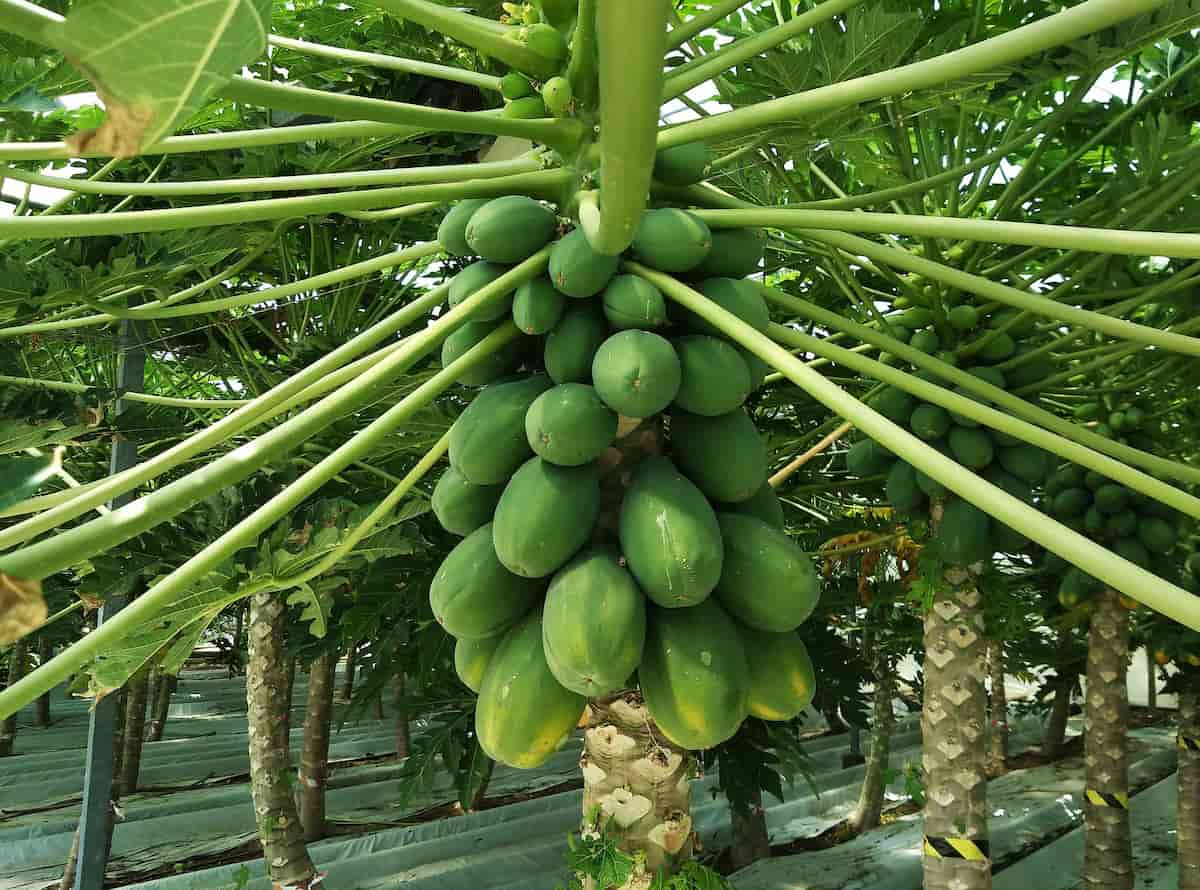
When it comes to watering he chose a drip irrigation system for his organic papaya farm. Papaya plants need regular watering to grow quickly and make much fruit. In the winter, you should water once every 8–10 days, and in the summer, you should water once a week, says Mr. Manohar. Standing water often hurts the crop, so the plants need good drainage. Both ring irrigation and drip irrigation are very good choices. It is recommended that you use drip irrigation to make up for 80% of the water that evaporates.
During the summer, each plant needs 20–25 L of water. This amount can be reduced during the winter to 10–15 L per plant. Drip irrigation could save 50–60% of the water used. Crops produce more with drip irrigation at 6–8 L/day/plant. Mr. Manohar uses only organic fertilizers and insecticides on his farm. His farm is 100% organic, as he won’t use chemicals for weeding. Weeding is an important and essential process, says Mr. Manohar. Weeding helps papaya plants to stop competing for nutrients.
Mr. Manohar says he uses a power driller for the weeding process instead of using chemicals. Chemicals can have a bad effect on soil, says Mr. Manohar. As fertilizers, he provides his plants with panchagavya, jeevamrutham, cow manure, chicken manure, animal manure, micronutrients, sour curd, and compost. These are the only fertilizers he uses on his farm, and he makes each fertilizer. He added that these are 100% natural fertilizers and work even more efficiently than chemical fertilizers.
Mildew is one of the major diseases that can attack papaya farms, and to prevent this, Mr. Manohar says he uses cow urine and sour curd. He says this works very efficiently, and he didn’t see his farm getting attacked once by mildew. He even uses traps on his farm for fruitflies. He has nearly 20 traps per acre which can control fruitflies. He uses his farm’s natural insecticides (Dashapatra Kashayam) and Agnastram natural pesticides.
These fight all pests and diseases and keep your crop healthy, says Mr. Manohar. Intercropping can also be done on papaya farms, but Mr. Manohar only concentrated on his papaya crops and didn’t want to disturb his plants with other plants competing for nutrients. The advantage of organic farming is that you can get high-quality fruits at a very less cost. Organic farming will have its cost, but it is less than that of using chemical fertilizers and insecticides.
One should be patient enough and put more effort into organic farming than chemical farming. In this way, you can cut costs and get good quality fruits, says Mr. Manohar. Cutting will start from the 8th month after planting. One can easily harvest nearly 75 tons minimum from one acre of papaya farm, says Mr. Manohar. He sells his harvest at 10 rupees per kg.
In case you missed it: How This Farmer Earned 24 Lakhs from His 3 Acres Avocado Farm: A Success Story of Small-Scale Fruit Cultivation in India
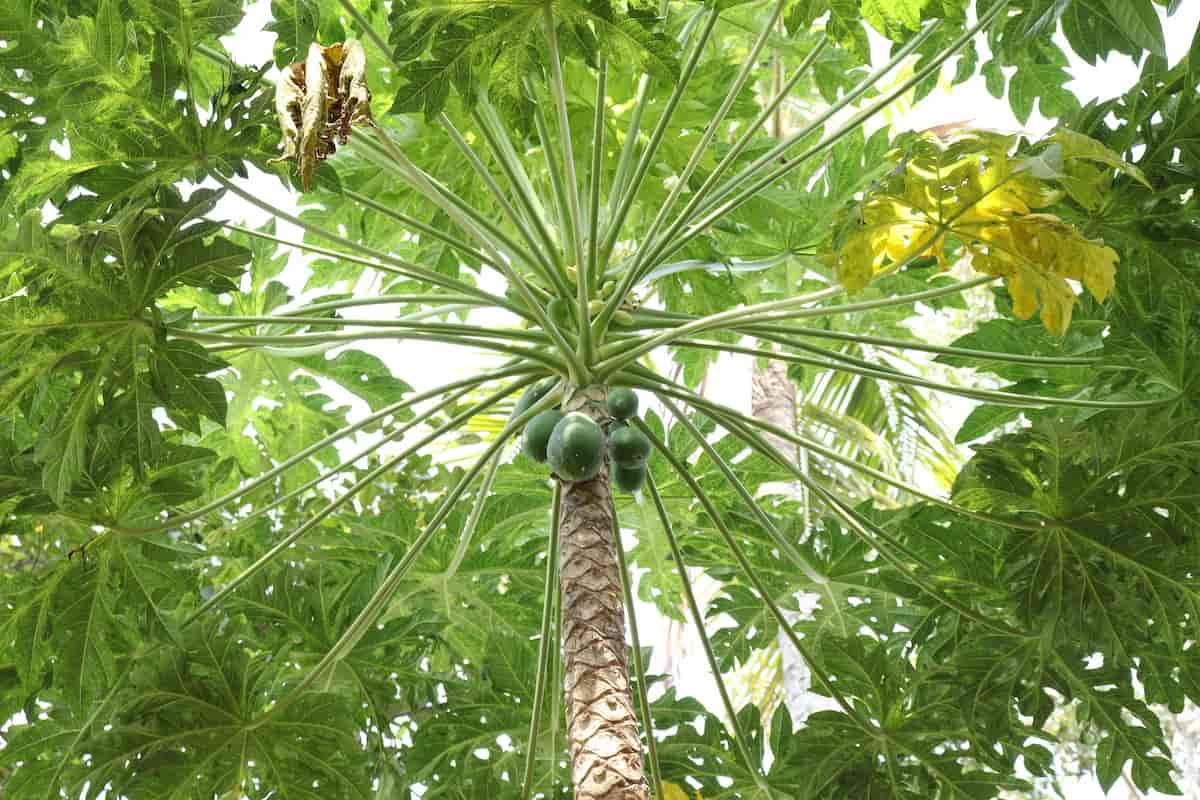
Investment and profit analysis of Mr. Manohar’s organic papaya farm
As mentioned above, Mr. Manohar sells his harvest at 10 rupees per kg. For his whole 3 acres farm, he gets a minimum harvest of nearly 225 tons. If he sells this harvest at 10,000 rupees per ton, his annual income would be nearly 22,50,000. When it comes to investment, Mr. Manohar says that it takes nearly 70,000 rupees as a running investment per acre. This means the total investment for his 3-acre farm is nearly 2,10,000 rupees.
If we take off this investment from the profit, Mr. Manohar gets nearly 20,40,000 rupees. This is huge for a farmer who cultivates on 3 acres. This way, Mr. Manohar earns huge profits from his organic papaya farm. He also advises farmers to start organic farming, which costs less and yields more quality produce.
- Types of Pesticides Used in Agriculture: A Beginner’s Guide
- Economical Aquaculture: A Guide to Low-Budget Fish Farming
- 15 Common Planting Errors That Can Doom Your Fruit Trees
- How to Make Houseplants Bushy: Effective Tips and Ideas
- Innovative Strategies for Boosting Coconut Pollination and Yield
- Pollination Strategies for Maximum Pumpkin Yield
- The Complete Guide to Chicken Fattening: Strategies for Maximum Growth
- Natural Solutions for Tulip Problems: 100% Effective Remedies for Leaf and Bulb-Related Issues
- Revolutionizing Citrus Preservation: Towards a Healthier, Greener Future
- Natural Solutions for Peony Leaf and Flower Problems: 100% Effective Remedies
- Maximizing Profits with Avocado Contract Farming in India: A Comprehensive Guide
- Natural Solutions for Hydrangea Problems: 100% Effective Remedies for Leaf and Flowers
- The Ultimate Guide to Choosing the Perfect Foliage Friend: Bringing Life Indoors
- From Sunlight to Sustainability: 15 Ways to Use Solar Technology in Agriculture
- The Ultimate Guide to Dong Tao Chicken: Exploring from History to Raising
- The Eco-Friendly Makeover: How to Convert Your Unused Swimming Pool into a Fish Pond
- Mastering the Art of Delaware Chicken Farming: Essentials for Healthy Backyard Flocks
- 20 Best Homemade Fertilizers for Money Plant: DIY Recipes and Application Methods
- How to Craft a Comprehensive Free-Range Chicken Farming Business Plan
- Brighten Your Flock: Raising Easter Egger Chickens for Beauty and Bounty
- How to Optimize Your Poultry Egg Farm Business Plan with These Strategies
- Subsidy for Spirulina Cultivation: How Indian Government Schemes Encouraging Spirulina Farmers
- Ultimate Guide to Raising Dominique Chickens: Breeding, Feeding, Egg-Production, and Care
- Mastering the Art of Raising Jersey Giant Chickens: Care, Feeding, and More
- Ultimate Guide to Raising Legbar Chickens: Breeding, Farming Practices, Diet, Egg-Production
- How to Raise Welsummer Chickens: A Comprehensive Guide for Beginners
- How to Protect Indoor Plants in Winter: A Comprehensive Guide
- Ultimate Guide to Grow Bag Gardening: Tips, Tricks, and Planting Ideas for Urban Gardeners
- Guide to Lotus Cultivation: How to Propagate, Plant, Grow, Care, Cost, and Profit
- Agriculture Drone Subsidy Scheme: Government Kisan Subsidy, License, and How to Apply Online
- Ultimate Guide to Raising Araucana Chickens: Breed Profile, Farming Economics, Diet, and Care
- Bringing Hydroponics to Classroom: Importance, Benefits of Learning for School Students
- Ultimate Guide to Raising Polish Chickens: Breed Profile, Farming Economics, Diet, and Care
- Ultimate Guide to Raising Australorp Chickens: Profile, Farming Economics, Egg Production, Diet, and Care
- Silkie Chicken Farming: Raising Practices, Varieties, Egg Production, Diet, and Care
- Sussex Chicken Farming: Raising Practices, Varieties, Egg Production, Diet and Care